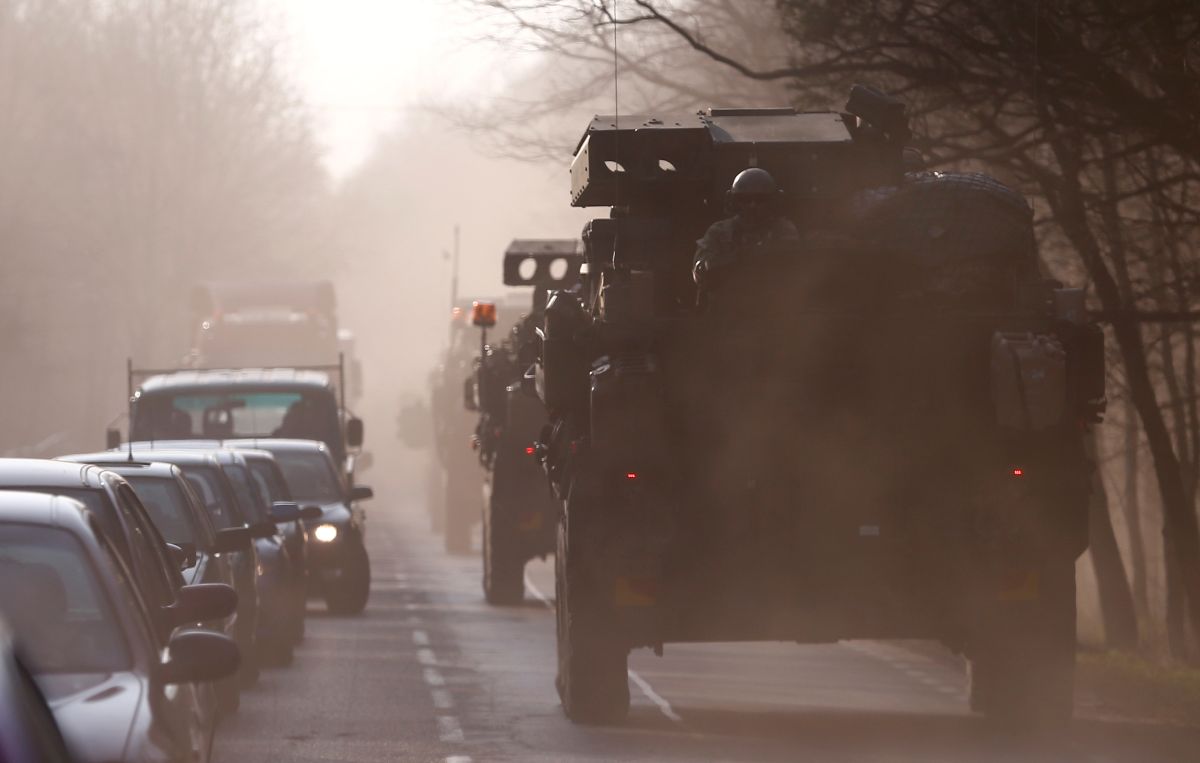A New Impulse for the Development of Military Mobility in the EU
In May, the Council of the EU agreed that Canada, Norway, and the U.S. can join the EU’s Military Mobility project. This is the first decision to allow third countries to participate in Permanent Structured Cooperation (PESCO). The political impulse has the potential to improve the speed and flexibility of the deployment of military forces within the EU. However, a coherent approach by the EU and NATO should be maintained and joint investments in transport infrastructure increased.
 Fot. Kacper Pempel/Reuters
Fot. Kacper Pempel/Reuters
Military Mobility Concept
This concept encompasses the swift deployment of military personnel and assets throughout the EU to enable rapid reaction when a crisis occurs. It can be conducted on behalf of a Member State, common security and defence policy, or as part of other multinational activities, such as NATO.
In 2018, the European Commission and the High Representative for Foreign Affairs and Security Policy presented the “Action Plan on Military Mobility”, which provides a framework for the EU and its Member States. The main goal is to remove barriers to military transport (road, rail, air, sea) currently hindered by various requirements, numerous formalities, and lengthy procedures. Also, some infrastructure requires adaptation to receive deployments of military forces, for example, due to insufficient bridge weight tolerances, height clearance of road viaducts, or rail loading capacities.
In addition, Enhanced Military Mobility was listed as one of the six priority areas in the EU’s Review on Defence (CARD) last year. It includes recommendations for Member States which by 2025 should be more committed to improving air and sea transport, logistics, and the resilience of IT systems and processes in hybrid warfare conditions.
Progress in Removing Barriers
Actions to improve military mobility are implemented under several EU initiatives. Most notably, in 2018, the Council of the EU approved the basic requirements essential for rapid military transit. They covered a wide range of issues, such as planning and implementation of activities, infrastructure, legal regulations, availability of resources and transport facilities, information coordination and exchange, safety, training, and environmental aspects.
Several projects aimed at improving military mobility are run by the European Defence Agency. Their effect is the development of two Technical Arrangements on Cross-Border Movement Permissions for land and air military movements (including dangerous goods) between 25 Member States and Norway. They are based, among others, on previous arrangements concerning diplomatic clearances for military overflights and landings. The new guidelines will allow significantly shortened permit issuance times (from as much as 20 days to 2 days) and reduce the administrative burden of states (e.g., as part of annual clearances). Moreover, customs procedures were harmonised last year with the EU adopting “form 302” for military assets transit. This will allow for shorter border clearance times, which in extreme cases was taking several days.
Cooperation between interested Member States also takes place within the framework of PESCO. One of the broadest projects is “Military Mobility”, joined by 24 out of 25 countries participating in structured cooperation (except Ireland). Based on the project, a network of National Points of Contact for military mobility was established. In addition, 15 countries are involved in a separate PESCO project to create the “Network of Logistic Hubs” in Europe serving as military warehouses. They reached initial operational readiness last year and are expected to be fully operational by 2024.
In addition to regulatory projects that do not require high financial expenditure, the EU budget for 2021–2027 provides €1.5 billion under the Connecting Europe Facility to support infrastructure projects related to military mobility. This amount is significantly lower than originally planned (€6.5 billion), but during the budget negotiations it could be reduced to zero due to pandemic crisis. As a result, the cuts affected Central European countries in particular, as they need a much deeper modernisation of their transport networks and preparation of railways, bridges, and local roads, among others, to manage the transfer of large military forces.
Cooperation with Partners
As the threat from Russia is ongoing, enhancing security in Europe depends on coordinating the EU and NATO efforts. The agreement that the EU Member States reached in May to allow Canada, Norway, and the U.S. to join the PESCO “Military Mobility” project is an expression of closer cooperation with allies. The participation of the U.S., which is by far NATO’s strongest member, with extensive experience in military deployments, is of particular importance for European security. The enlargement of the PESCO project creates opportunities to increase the number of joint exercises, such as Defender Europe 2020, as well as to improve compatibility in terms of procedures, equipment, and infrastructure between partners.
Military mobility is one of several NATO-EU flagship cooperation projects. It takes place at the working level, enabling consultations between the organisations on such issues as unifying military procedures and requirements. In addition, it enables the EU to supplement the Alliance’s competences, including on legislative issues and financing of dual-use (civil-military) projects. Simplifying cooperation between the allies is achieved by, among others, the introduction in the EU of customs rules similar to NATO (“form 302”) and the adoption of a Directive ensuring equal treatment of defence activities in both organisations from a fiscal perspective (supplies for the armed forces will include VAT and excise tax exemptions, bringing millions of euros in savings to the Member States).
Conclusions and Challenges for the Future
The development of military mobility has the potential to shorten the reaction time when a crisis occurs and should translate into an increase in the conventional deterrence potential in Europe. The 2018 plan’s assumptions are implemented holistically and, in the case of certain projects and administrative procedures, it is starting to bring tangible results. However, it will be necessary to work on additional projects, such as further shortening the permit issuance time for military transit. The current target at the EU level is five days, but the prolonged procedures may have a negative impact on the execution of NATO’s planning assumptions in the event of a crisis on its Eastern Flank or elsewhere. More attention should also be paid to the issues of modern technologies, including in the field of the cybersecurity of transport networks and authorisation systems (e.g., digitisation of “form 302”).
The activities of the EU Member States will be of key importance for the implementation of the military mobility concept, among other things, as part of the development and implementation of national plans for increasing military mobility. Poland is committed to developing military mobility, taking part in all EU projects. At the national level, it also guarantees issuing permits within five days for EU and NATO armed forces, and within three days for high-readiness forces. In addition, for example, the centre in Kutno passed testing under the PESCO Network of Logistic Hubs in Europe project during the NATO Forward Air Policing exercise last year.
As Connecting Europe Facility funding covers only dual-use projects, Member States should increase investments in military-specific infrastructure. However, the EU’s analysis of the gaps between military requirements and the civil Trans-European Transport Network (TEN-T), which has already been carried out twice (in 2019 and in 2020 after Brexit), should be assessed positively. A helpful tool in the analysis of transport networks was the addition of a military component to the TENtec Interactive Map Viewer.
The involvement of three NATO members from outside the EU will be an additional impulse for the development of military mobility, and the EU should therefore be able to support the U.S. and NATO more effectively in strengthening security in Europe. Improvement of cooperation would be favoured by further standardisation of the activities of both organisations, for example, by the development of common terms of reference and, in the future, also the conclusion of an agreement on the exchange of classified information (currently it is provided by the Member States). The dispute between Greece and Cyprus and Turkey, the latter of which has also applied to join the PESCO Military Mobility project, remains a challenge. Its involvement would, however, enable the two organisations to improve their cooperation at the political level and facilitate the implementation of technical projects.


